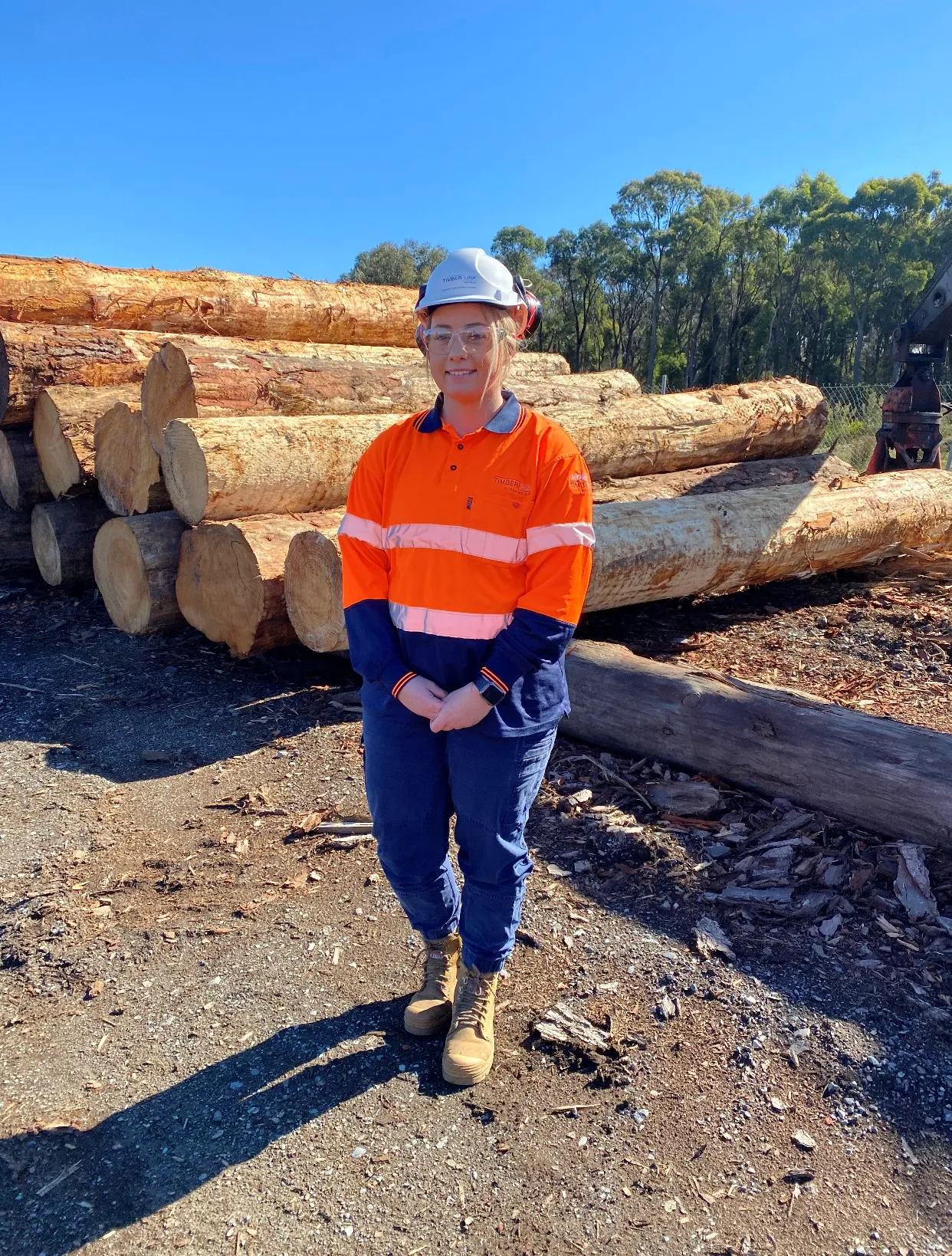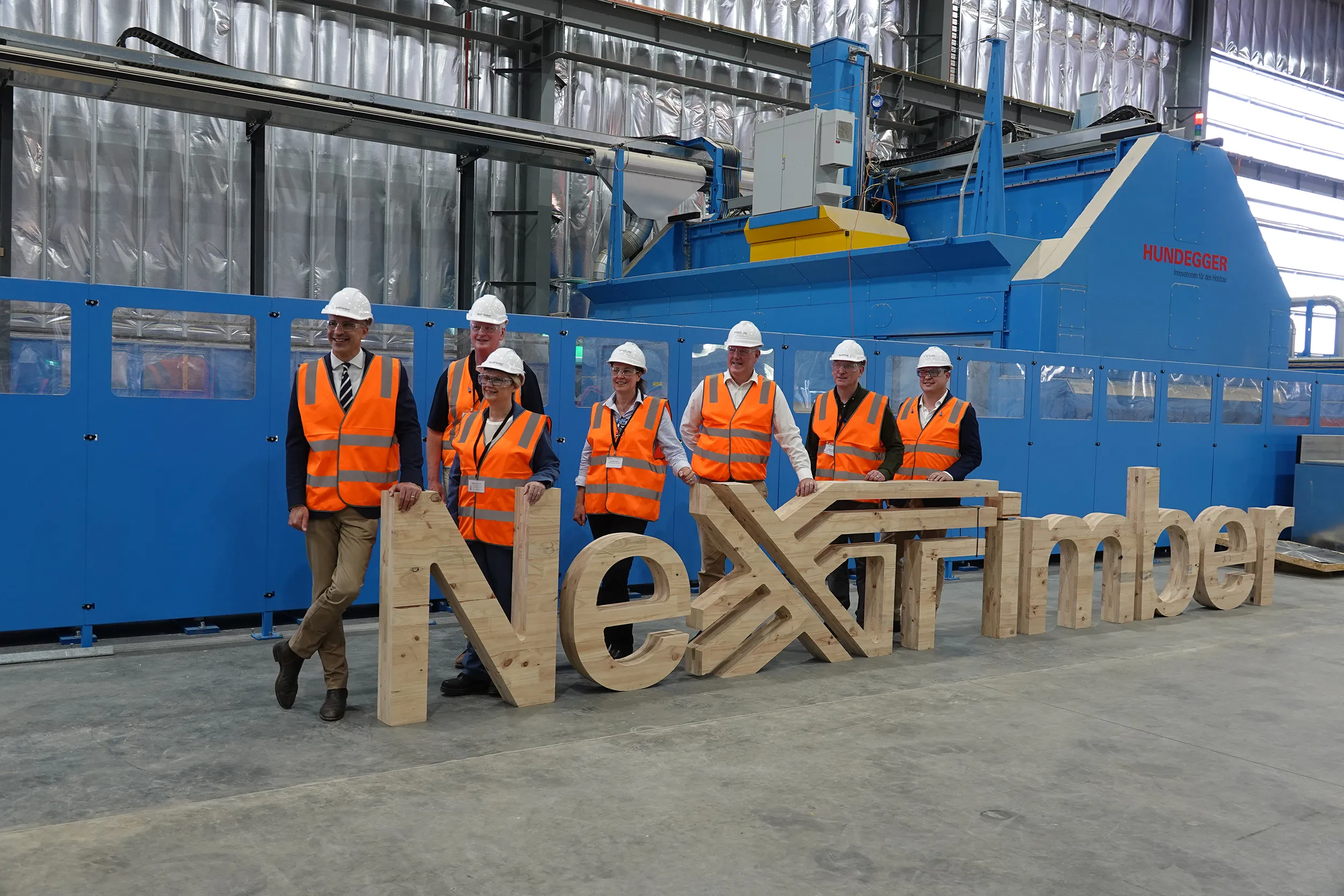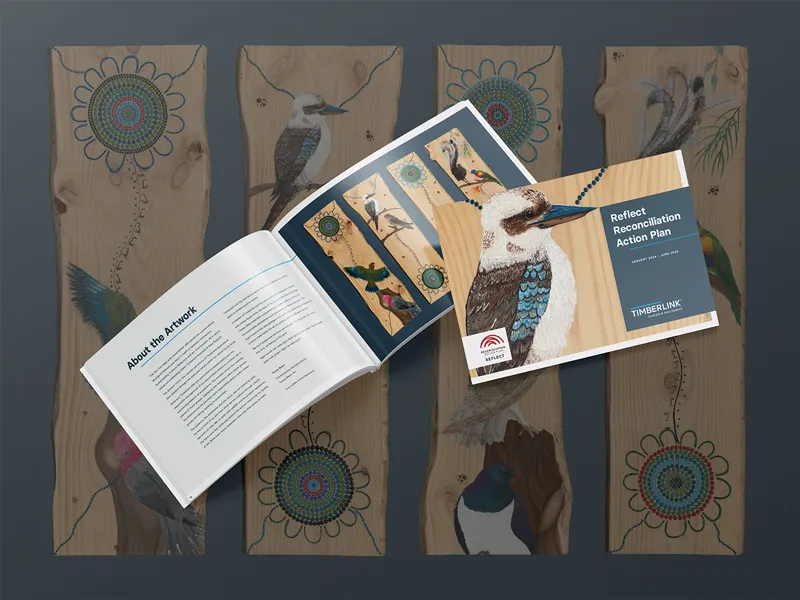Women in Timber
The timber industry was historically dominated by men, but things are changing fast both inside the mill and in the office. We spoke in depth with Denise Morrison and Carley Murphy, about their careers, the challenges they have faced and about why a career in timber is something young women should consider.
Q. What is your background and how did you enter the timber industry?
Denise: I moved to take up my current role as Operation Excellence Manager at Timberlink’s Tarpeena Mill in Dec 2019. Prior to that, originally from Melbourne, I moved to Tumbarumba for family reasons and had a personal training business. I began working nightshift at Hyne and
moved my way up to be the production manager of the Dry Mill.
Q. How did you end up in your current role – Operational Excellence Manager?
D: My original goal at Hyne was to become Dry Mill manager but my interest in lean manufacturing to help minimize waste in the business led me into a Business Excellence role supporting all managers and personnel on site, to implement change and improvements. My lean manufacturing journey is now continuing as Operational Excellence Manager at Timberlink and I’m really enjoying getting stuck into the role.
Q. What are some of the challenges as a woman working in the industry? What can be done to improve this? What steps have been taken in your time that you have seen improve things for women?
D: From where I started in a small town, the boys were very “boysy”. It wasn’t until some people came from outside the town that women began to be promoted through the business. However, I’ve been very lucky in that the people I’ve worked with and companies have been great.
There are always some guys around that try to be more
dominant but I won’t put up with it. I’m probably one of
the lucky ones in that it hasn’t affected me.
Q. What advice do you have for women who are thinking about entering the timber industry or male-dominated industries in general?
D: Be yourself, do the right thing, work hard, you will be acknowledged, there are no limitations on what you can achieve. It’s about hard work and putting your best foot forward. Be confident and speak up when the opportunities are there.
Q. People often assume working at a sawmill involves a lot of lifting and manual labour. Can you talk a bit about the automation of the industry?
D: Typically mills were about manual labour a long time ago, but with the automation there is no limitation to what we can do in any role. A timber mill is a highspeed manufacturing plant. We are there to oversee the machinery, not to run the machinery, there is minimal manual work. It is hands off not hands on. Your physique is not an issue, it is about your mind. There is mechanical, electrical, HR, sales, safety and admin not just operators. So I encourage anyone to get involved in timber. It is a great career and it feels good knowing you are working with a renewable resource.
Q. What is your background and how did you enter the timber industry?
Carley: I previously worked in Real Estate for 3 years but was looking for a job where I would spend more time out of an office and more time doing a task that required more thinking and more physical work. I enquired about the job advertised at Timberlink at the time and was told that I would start in the wrapping station with the opportunity to move up. It has been over a year nowsince being employed by Timberlink and so far I am enjoying each day and the people I work with
Q. What do you enjoy most about your role and the industry as a whole? How did you end up in your current role? Dry Mill treatment re-wrap

Carlee Murphy
C: My current role here at Timberlink is treatment rewrap on the Fromm (pack wrapping) line. This involves wrapping the packs that have been treated so that they are ready to be sent out to our customers. Other areas I have been trained and worked in are the grade station and the other main wrap station line. When I first started, I had no idea how many different grades of timber there were. Over the past 12 months I have been
shown how to identify different grades and what each grade means. I found this really interesting and beneficial as now I have a great understanding of why we cut so many different sizes of timber and that each size and grade has a different purpose.
Q. What advice do you have for women who are thinking about entering the timber industry or male-dominated industries in general?
C: To be honest I don’t believe there are any challenges as a woman in the industry. When I first started, I worked with 3 other women at the wrap stations and felt completely comfortable, and the men I have dealt with on my shift have also been wonderful and have helped me if I had any questions and have helped me with learning new machinery throughout the mill. I have also noticed throughout my time here that more and more women are being hired and I think that is also great.
‘
Q. People often assume working at a sawmill involves a lot of lifting and manual labour. Can you talk a bit about the automation of the industry?
C: Going from an office job to a sawmill was a big change for me, I had no idea what to expect or what it would even be like. It was nothing like I thought it would be, the jobs are definitely not what you think they will be when you picture working in a sawmill, it is all automated. Previously packs were wrapped individually with just a trolley and plastic roll set up. Now that the Fromm line is installed the process is all automated so that the pack is called, the plastic is dropped on top on the way through, operators staple the plastic down and then it is
sent through a strapper ready to be placed in dispatch. This automation makes things so much easier and more efficient, as well as taking some of the physical work out of it making it easier on the operators. So overall the experience I have had so far has been great, and I would strongly encourage any young woman if they were looking for a change in their current lifestyle to jump in and have a go! The experience and knowledge
you can gain could lead you down any path in the timber industry as there are definitely a lot more opportunities in this career.


